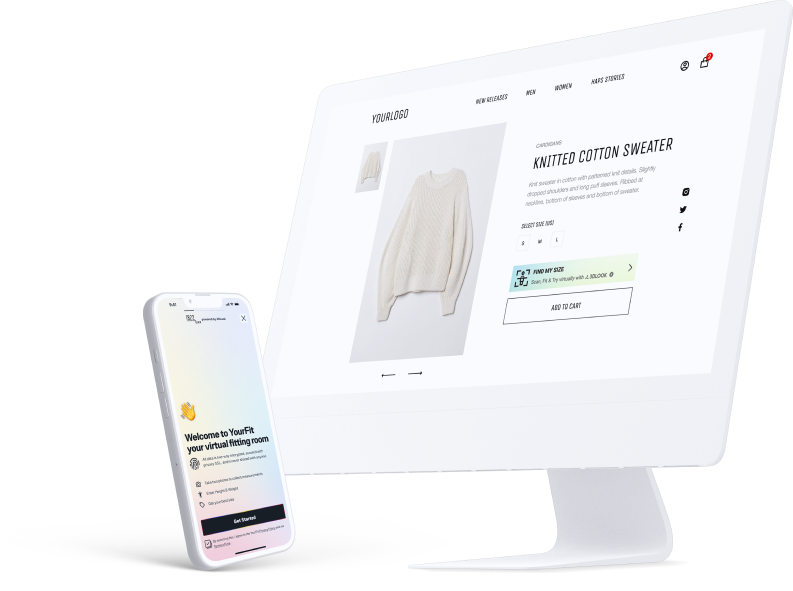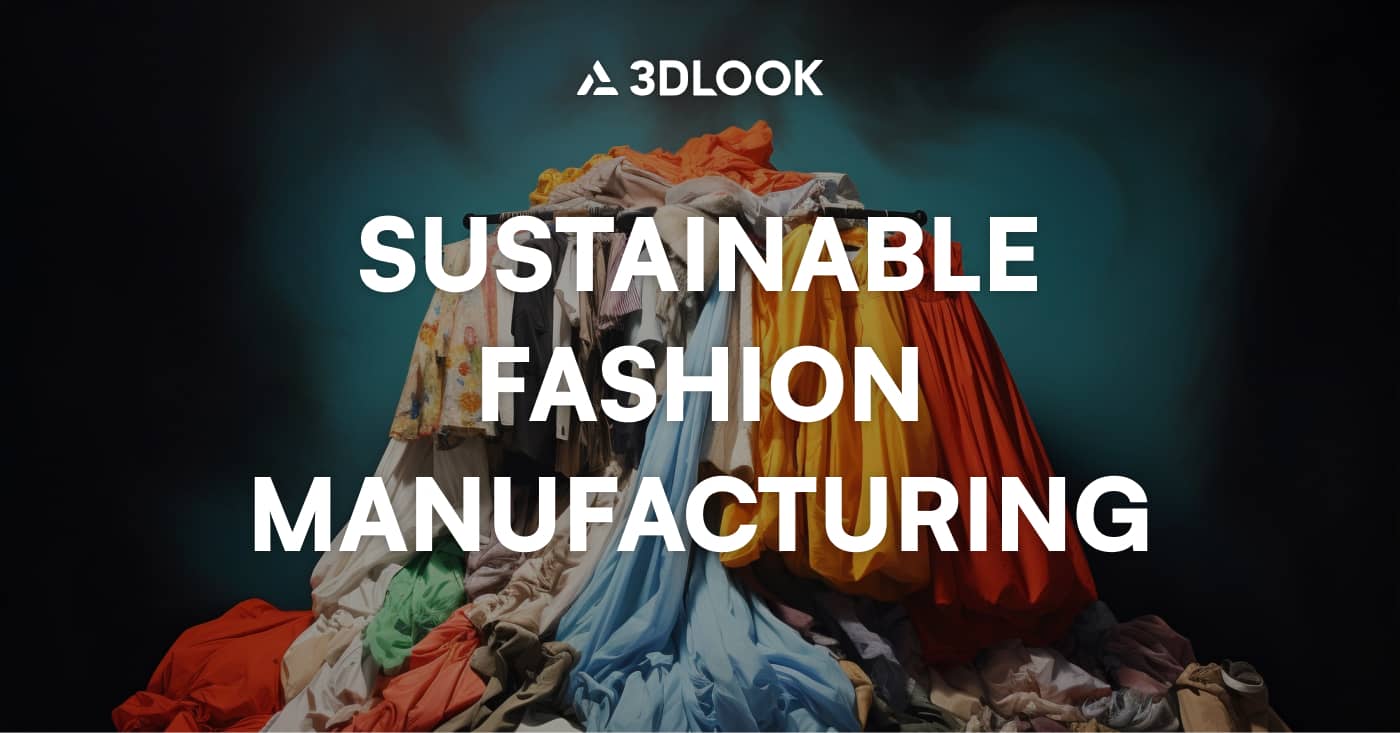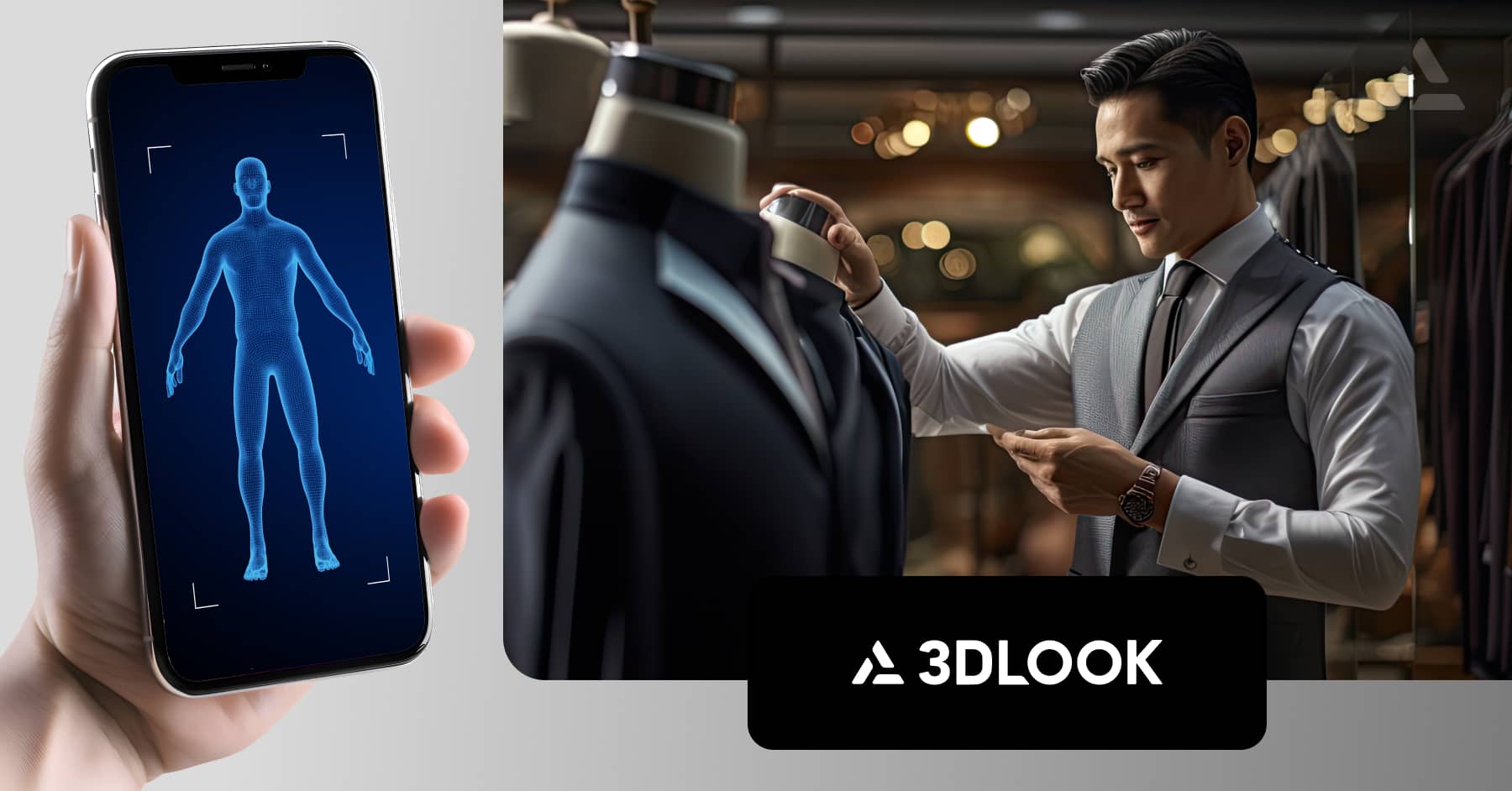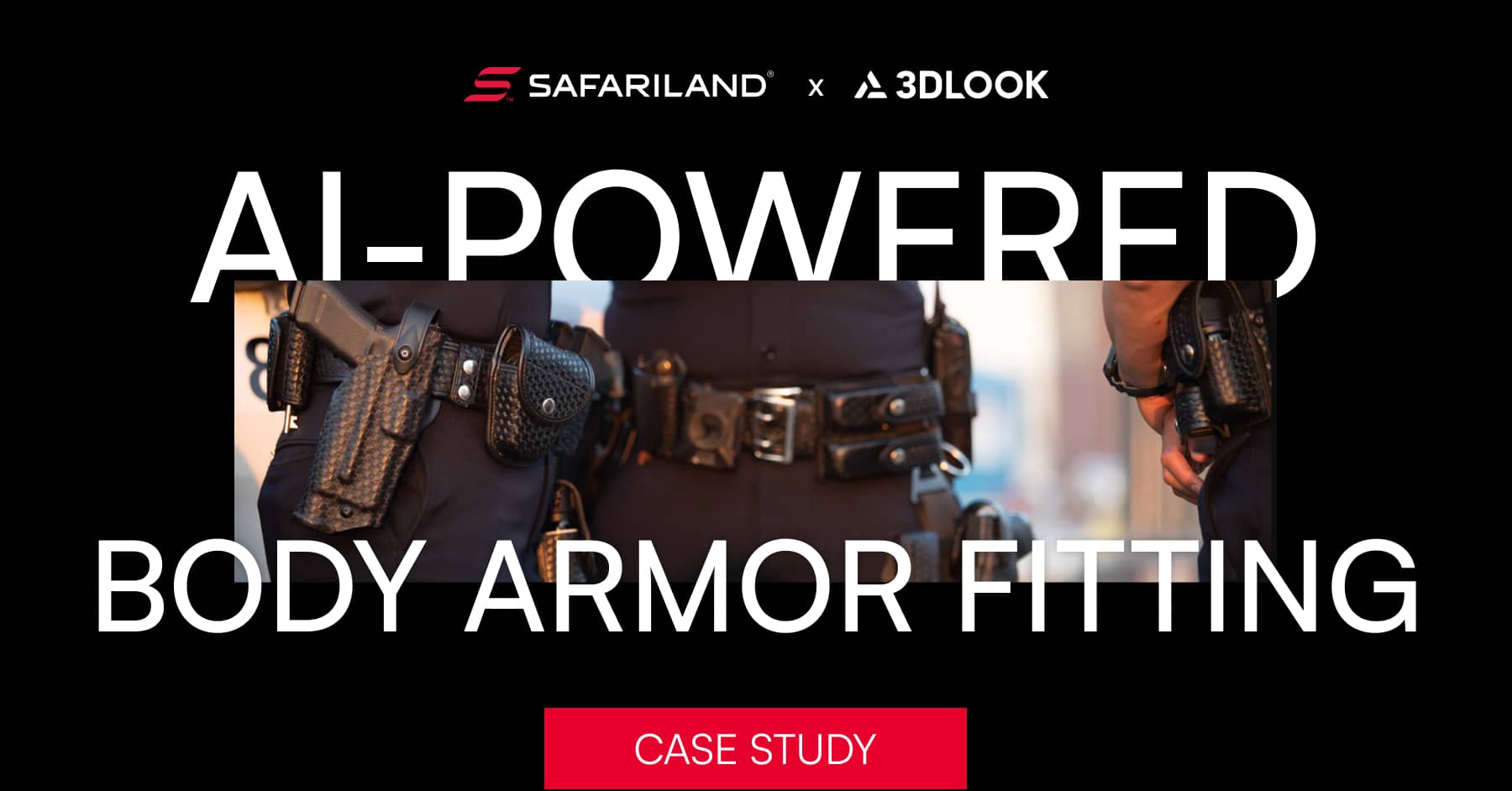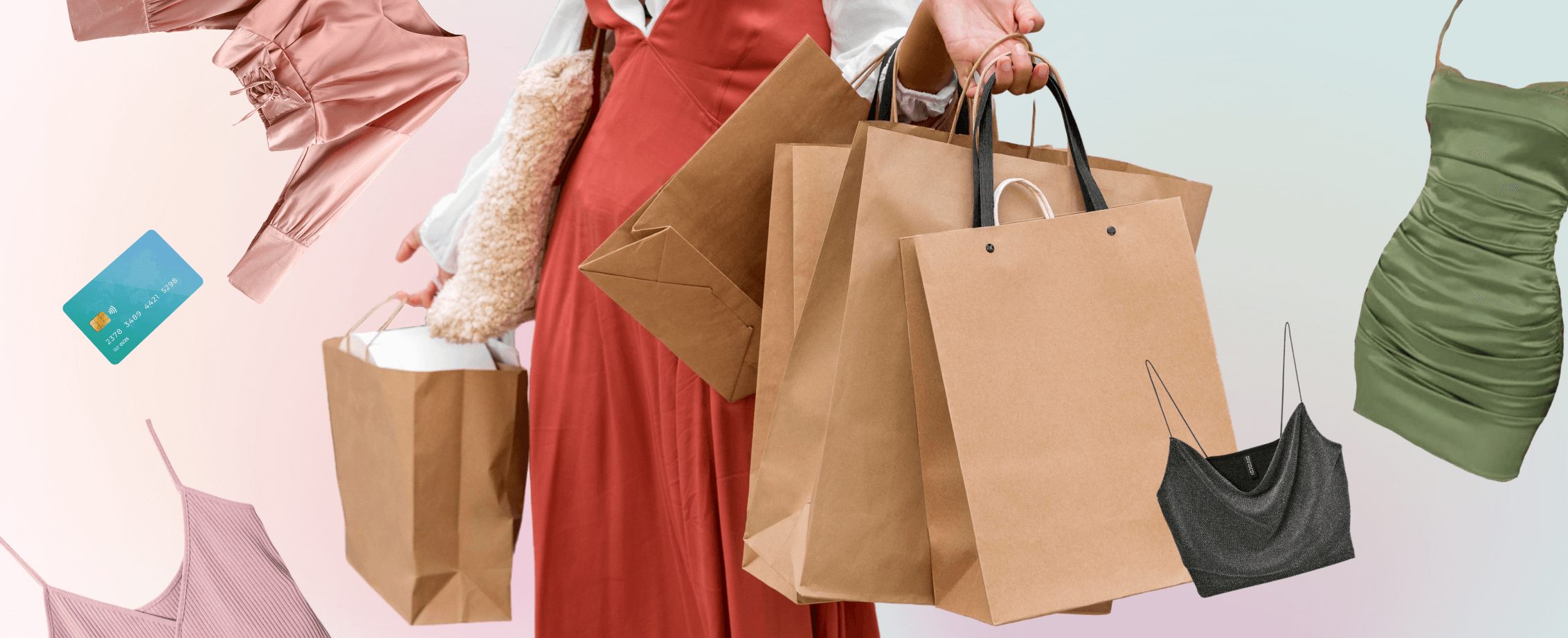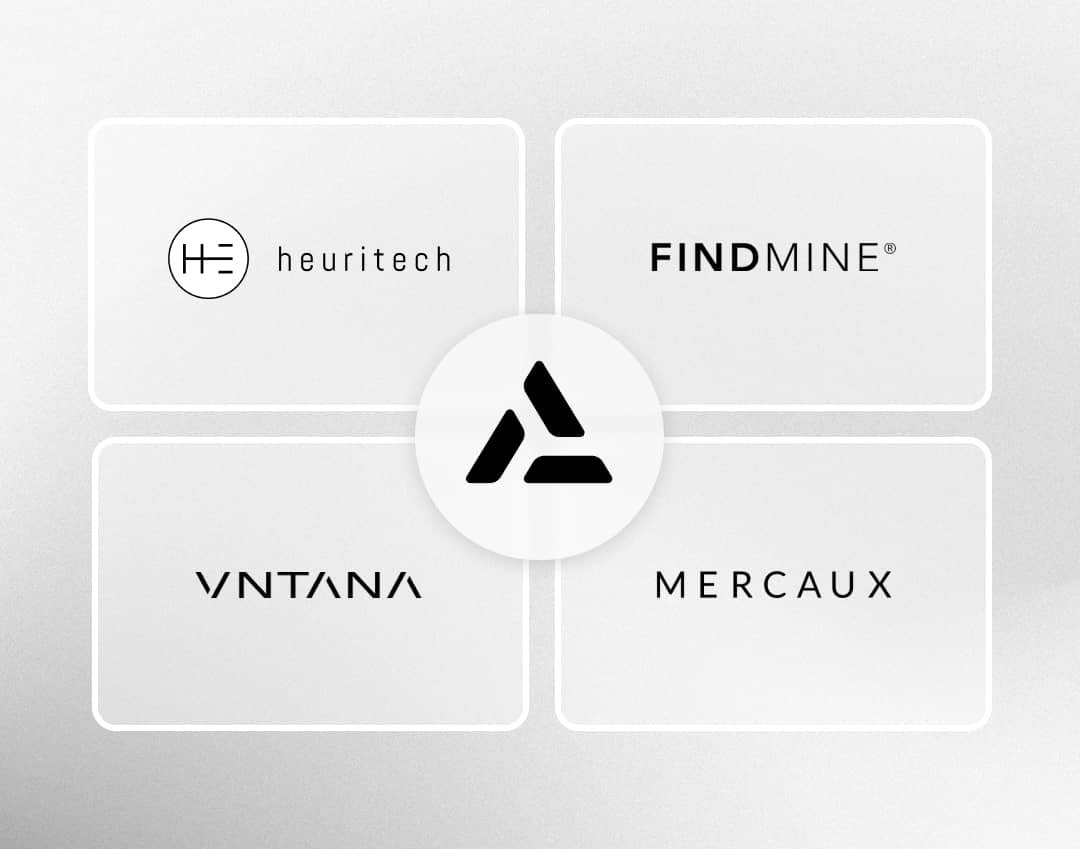Conversion Rate Optimization UX: Tailoring Your Product Pages
As fashion brands flock online to cater to this growing number of potential customers, competition will be more fierce than ever, and brands will need to optimize their product pages to attract, engage and convert shoppers.
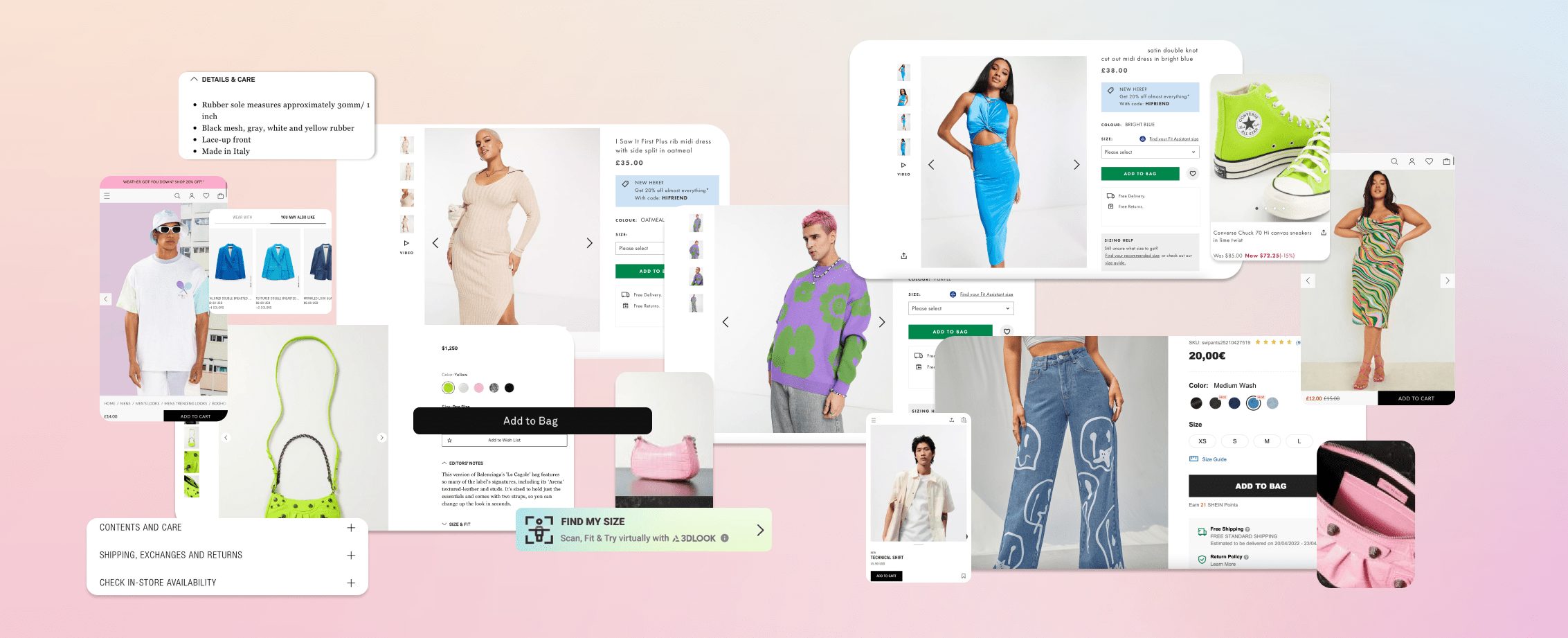

Share on

You’re getting visitors to your eCommerce store, but how many are completing a purchase? Discover the tips and tricks that leading and innovative fashion retailers have used to create high-converting product pages.

You’re getting visitors to your eCommerce store, but how many are completing a purchase? Discover the tips and tricks that leading and innovative fashion retailers have used to create high-converting product pages.
With the Covid-19 pandemic disrupting the physical retail experience, consumers have moved online, searching for the latest trends. According to Retail Economics, online clothing sales could overtake in-store purchases this year in key markets — three years ahead of previous predictions.
Ecommerce is no longer an option that brands can choose whether to participate in but rather a crucial component to the future success of fashion businesses.
However, just as physical retail is more than placing garments on a clothing rack, throwing some products on a webpage is unlikely to lead to success in the online world. Today’s consumers want engaging, innovative, and personalized experiences, but many stores fail to get even the basics right. Some 55% have backed out of a purchase because of additional checkout fees and 17% due to a lack of trust. These statistics suggest a poor product page experience that undoubtedly harms conversion rates.
In the US alone, the number of Shopify stores grew 178% in 2021 according to Ecommerce News, pointing to an ever-growing number of competitors in the eCommerce space. Thankfully, simple measures can help Shopify store owners to get ahead of the competition and capture the growing crowd of online shoppers.
Given just 1.8% of customers that visit an apparel eCommerce store purchase a product, retailers must tailor their product pages to improve the user experience (UX) – the customer’s journey from discovering your store to purchase – with a particular focus on conversion rate optimization (CRO), where changes are made to increase the percentage of users who checkout.
Many improvements will produce results across various sectors, but fashion eCommerce CRO requires a particular focus on elements such as product imagery and social proof so customers know what to expect when a garment arrives at their door.
Conversion rate optimization UX: Top tips to enhance the Shopify user experience
Following these tips, Shopify store owners can learn how to provide an optimal experience that encourages customers to checkout
1. Get to know your customers and tailor your product pages to address their desires, needs, and concerns.
Consumers want to shop with brands that champion the causes they care about and products that align with their beliefs.
From Patagonia’s sustainability-first product pages to 1822 Denim’s fit-focused customer flow, any conversion rate optimization user experience changes you make should serve to tell your brand’s story, connect with consumers, and show them why they should shop with you.

Image Source: ASOS
2. Don’t underestimate great imagery
According to Forrester, 63% of consumers use images to inform their purchasing decisions. High-quality photos are vital. However, be sure to compress image files or risk slow page loading speeds.
Leading retailers and brands such as Macy’s and Nike have used 360-degree images to provide customers with a superior view of their products and supercharge sales — according to Woocommerce, visual improvements like this can increase conversions by up to 40%.
Imagery can also help to showcase product variants and complementary products that encourage customers to browse.
According to Statista, the average fashion customer views 32 pages before purchasing. Featuring related products keeps customers browsing for longer, increasing the chances of finding suitable products.
Zara uses related products to cross- and up-sell. Its ‘Match with’ section guides customers to other items worn by the model in the product imagery, encouraging them to purchase the complete outfit. Likewise, Kohl’s ‘Ways to Style It’ tool curates a selection of outfits featuring the product, creating more opportunities for customers to find a look they love.
Product variants such as alternative colors or fit should be included on your product pages to help potential customers find the products that best suit their preferences, including a small image to know what they’re clicking. Images can be greyed out to show when they’re unavailable, and, additionally, retailers such as Fashion Nova prompt customers to enter an email address to receive a notification when a product is back in stock.

Image Source: Nike
3. Provide clear product copy that helps customers to feel informed
Product details such as materials, quality, and model size are always important, as is logistics information such as delivery fees and estimates.
However, with 83% of 18-34-year-olds prefer to buy from brands that support their values, a copy must also be aspirational, showing potential customers what your products can do for them.
Net-a-Porter enhances its descriptions with ‘editor notes,’ which offer background information such as luxury materials and manufacturing methods used to appeal to luxury shoppers. Likewise, Patagonia uses its product descriptions to highlight its sustainability commitment, detailing its materials and supply chain to ensure customers they’re purchasing responsibly-manufactured products.
Products should also be named carefully to assist customers as they search, using descriptive words and keywords that accurately represent the product. According to Moz, those who use on-site search and find what they’re looking for are twice as likely to convert.
Including brand names can also help to capture those using search engines. Leading retailers such as Fatfetch and ASOS frequently use this tactic to attract those searching for a specific product rather than a specific store.

Image Source: Net-a-Porter
4. Include relevant FAQs to dispel any customer concerns
With trust in the fashion industry declining by 6% in 2021, retailers must convince consumers that a product will meet expectations. FAQs should be tailored to the product, featuring questions shoppers most frequently ask your customer service representatives: How is the quality? Will it come up small? Is it sustainably produced?
Retailers such as Joules and Skinnydip London curate individual FAQs for each product by enabling customers to ask questions about the product directly through the product page. Once the customer service team answers the query, it is permanently stored within the FAQs section, helping future shoppers to find the answers they seek.
However, no matter how detailed your product pages are, they won’t provide the answer a customer is seeking. With phone and email communication a cause of ‘friction’ for 58% of shoppers, live chat can provide immediate support in a way customers are comfortable with.
Alternatively, AI technology is providing new ways to communicate. H&M, for instance, has turned to AI chatbots to answer customer queries and provide personalized recommendations, while Victoria’s Secret uses chatbots to help customers navigate the intimate realm of lingerie shopping.
5. Offer supply chain transparency that appeals to today’s conscious consumers
According to OpenText, 53% of UK consumers stated that they would never shop with a brand accused of working with unethical suppliers. Greater transparency shows shoppers that it’s safe to shop with your brand.
Brands such as H&M offer product background information, including the name and address of the factories used, allowing customers to look into the working conditions of the brand’s suppliers.
Likewise, Pangaia’s product pages offer customers information on the carbon cost of the product and how it offsets this — verified by a third party. Similarly, by scanning a QR code, customers can access the product’s digital passport, which provides information on the product lifecycle, environmental impact, and care tips.
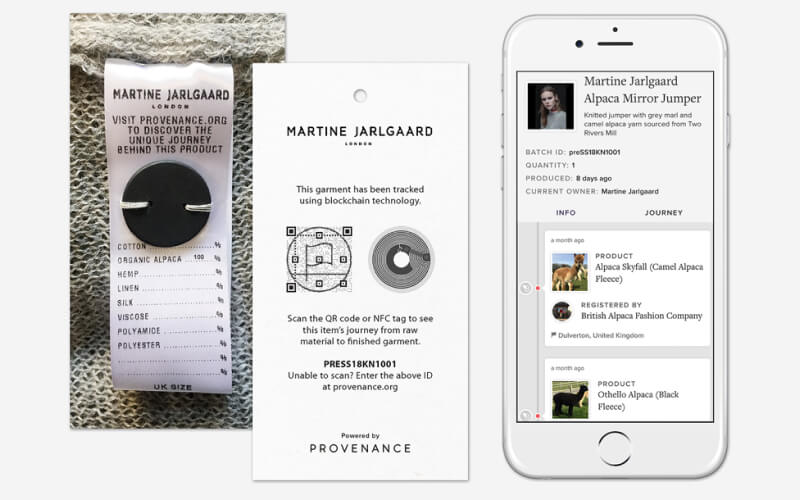
Image Source: Fashion Technology Accelerator
6. Provide accurate sizing information that boosts shopper confidence and reduces returns
Returns are a huge problem for fashion e-commerce, with approximately 30% of goods sent back — and the poor fit is the common culprit. Poor sizing information can make customers reluctant to purchase, and even when they do, conversions matter little if most of the goods are returned.
Retailers such as H&M and GAP provide ‘true to size’ calculations based on user reviews, which indicate whether a product’s fit is on the small size, spot-on, or too large. However, these ratings are based on the fit preferences of past customers rather than the customer being served.
Alternatively, technology is helping brands such as 1822 Denim to match customers with perfect sizes. Using YourFit, 3DLOOK’s 2-in-1 size recommendation, and virtual try-on platform, customers can scan their bodies using a smartphone device to receive tailored size recommendations. Using this tool, the brand has decreased returns by 48%, with 92% of customers satisfied with the results.
7. Put your CTA button center stage and keep the surrounding area uncluttered to limit distractions
Take your pick of any major eCommerce fashion retailer. Their CTAs are all largely the same: Simple ‘Add to cart’ prompts, above the fold, free from clutter.
However, not every customer wants to purchase immediately. Some will want to add to a wishlist for a later purchase or check a physical store’s availability. Adding secondary CTAs enables customers to shop the way they like. However, these buttons should be styled to stand out from the rest of the page without distracting from the primary CTA.
For instance, while Uniqlo’s ‘Add to bag’ button is front and center, it is closely followed by prompts to pay later with Klarna, check availability in store, and view the retailer’s returns policy. You will find similar examples on the eCommerce stores of Zara, Kohls, and many more.

Image Source: Uniqlo
8. Include user-generated content to add social proof and increase trust in your products
79% of shoppers say they trust online reviews as much as personal recommendations, according to Oberlo, and they can increase the likelihood of a sale by 270%, according to a Northwestern University study.
However, serving consumers of all shapes and sizes, fashion reviews aren’t so straightforward.
Brands such as Rent the Runway and Lulu’s use body data to enhance their reviews by including size, height, and bust. This enables shoppers to find customers with similar bodies to their own. Reviewers are also encouraged to provide a photo of themselves wearing the product, giving customers a look at how a product may fit their body.
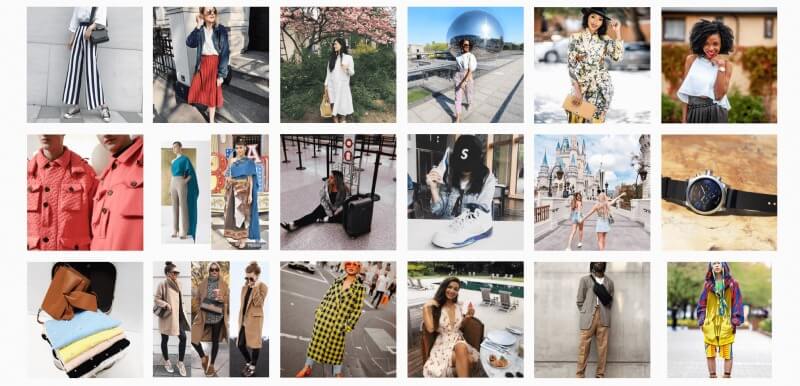
Image Source: Wide Eyes
Personalizing the user experience
The perfect product page will differ from brand to brand, guided by the needs and desires of its customer base. Before making conversion rate optimization UX changes, brands must understand their customers and consider what information is most important to them.
Technology can further enhance the user experience. With up to 50% of purchases motivated by personalization, tools such as YourFit can provide each customer with accurate size suggestions, tailored product recommendations, and a virtual fitting experience that increases customer confidence — accessible directly from your brand’s product pages.
Using YourFit, fashion brands have seen a fourfold increase in conversions. Contact 3DLOOK to discover how our innovative retail solutions can help your fashion eCommerce business to thrive.
Tags:
Fashion | Technology
EXPLORE MORE CONTENT

Subscribe to our Newsletter
Offer your customers an entirely new, inclusive, and engaging way to interact with your brand
Offer your customers an entirely new, inclusive, and engaging way to interact
with your brand
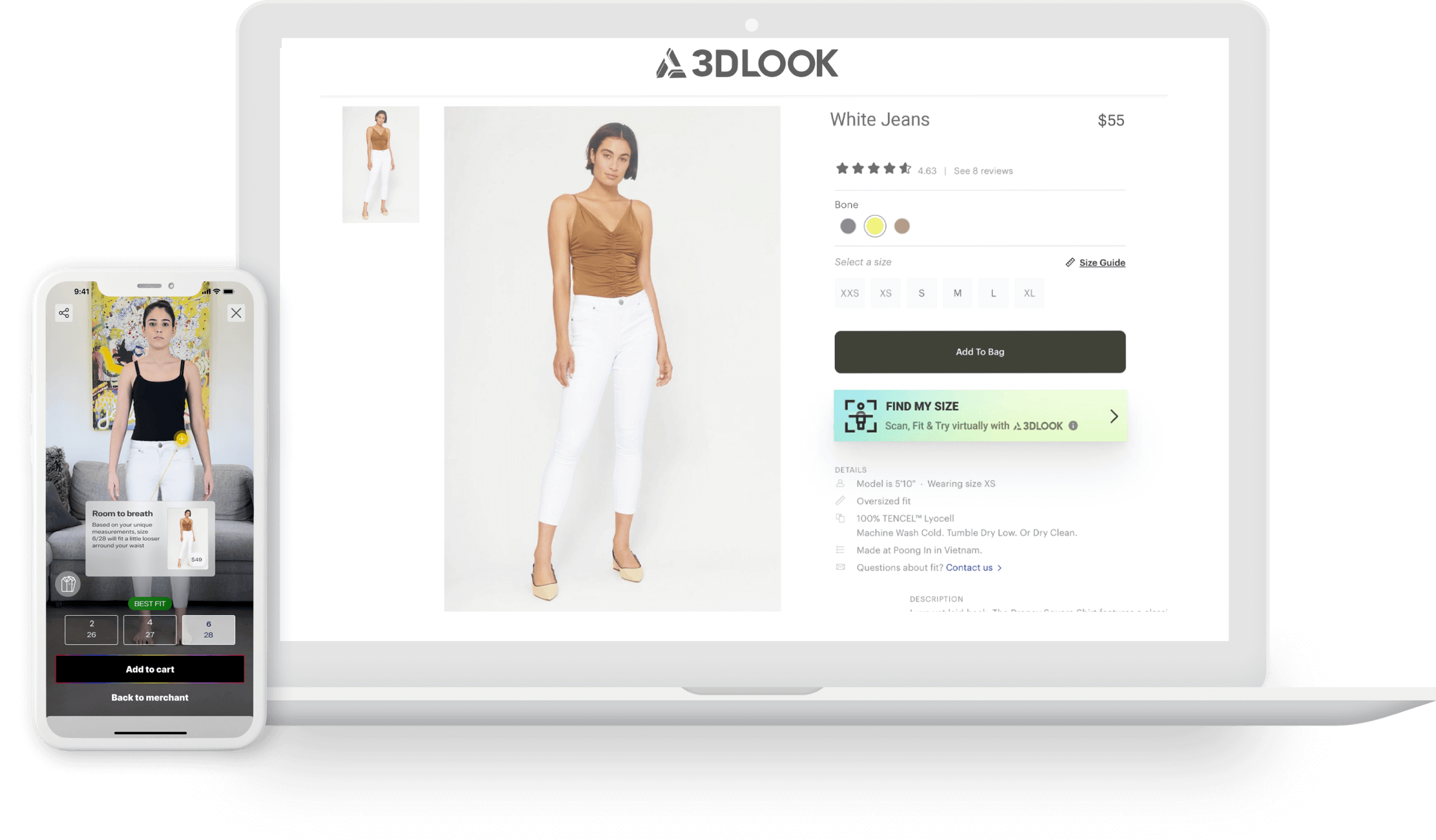
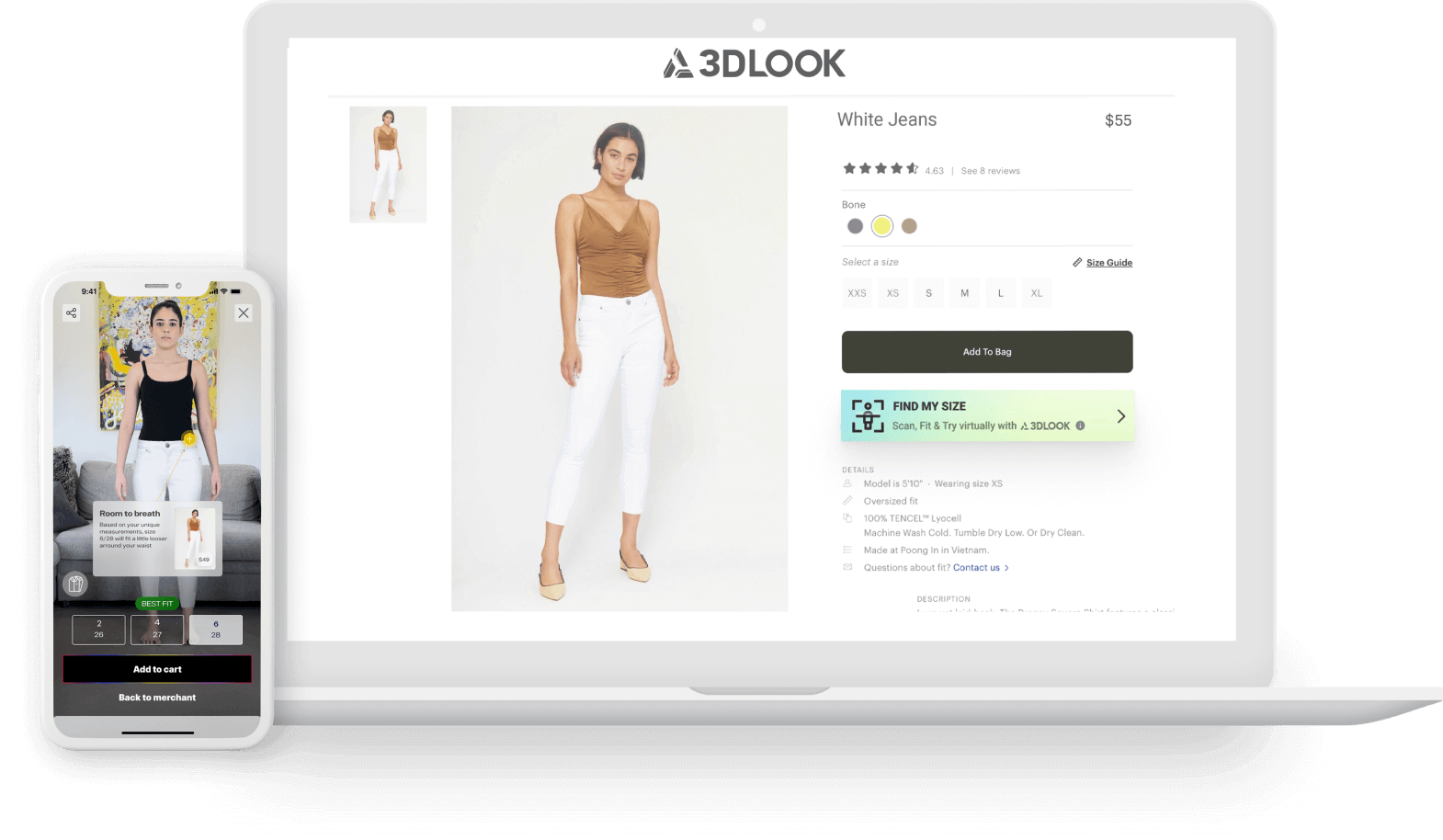
Let us help you find the right solution for your business needs
